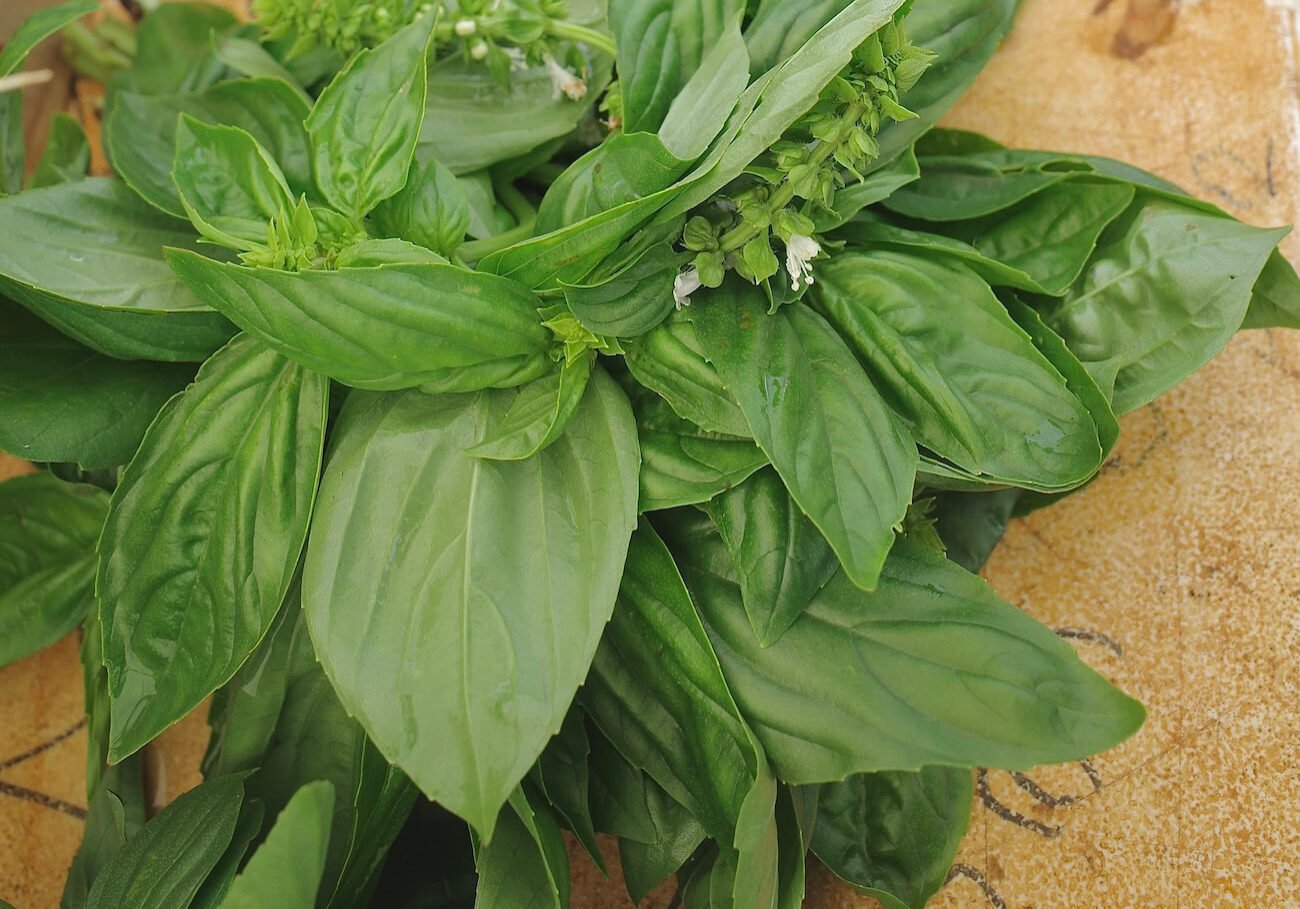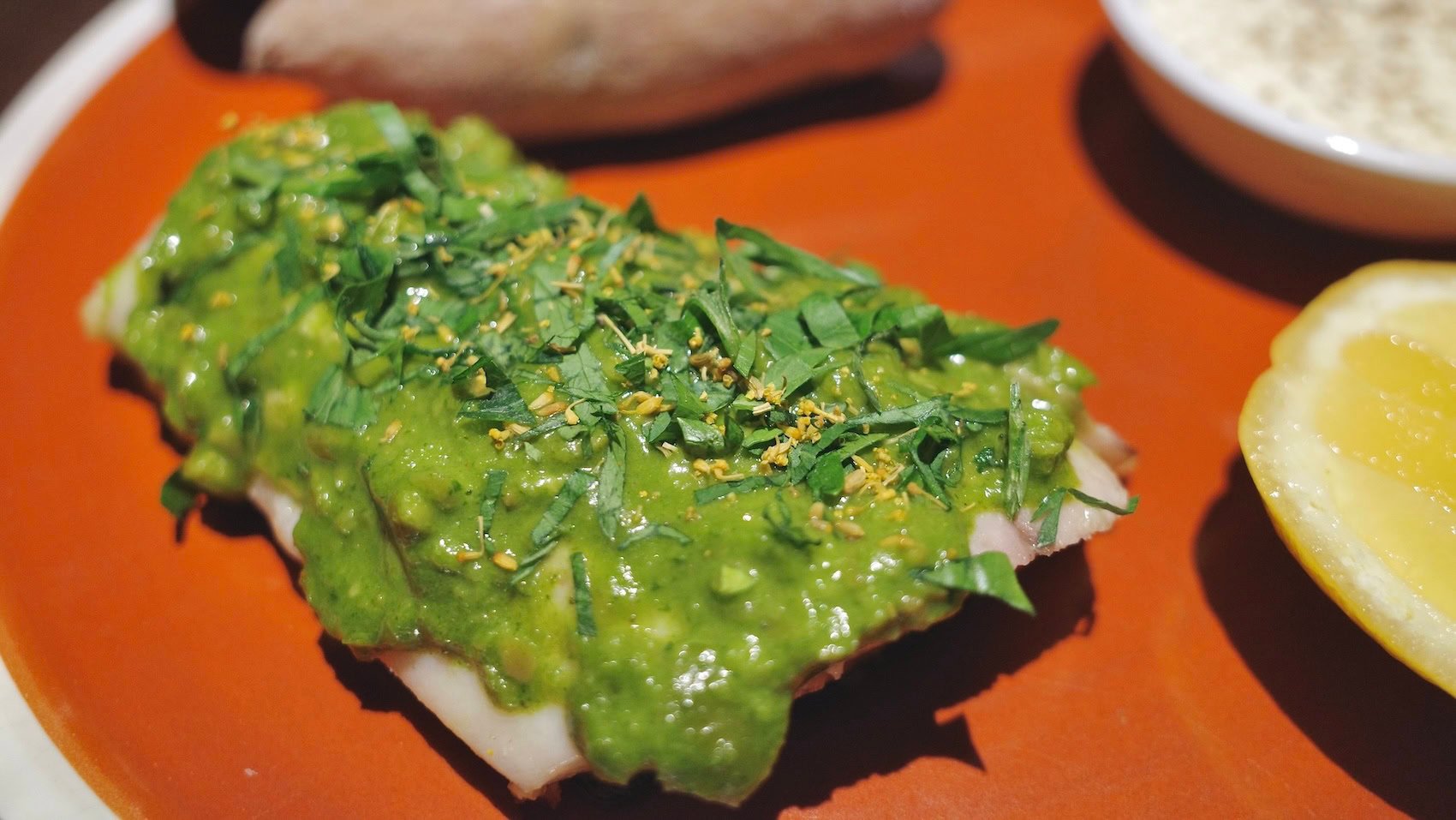How to Use Sweet Basil
The King of Herbs
Sweet | Bright | Zesty | Peppery

Sweet basil brings a burst of fresh, green, and gently peppery brightness everywhere it goes. From sauces, salads, and curries to fish, fruit, and ice cream, the King of Herbs invites you to explore its many uses and pairings!
FORMS
- Fresh: Fresh basil is always preferred as the sweet, floral intensity that we crave comes from delicate top notes that can only survive in its fresh form. The bright, peppery aroma of freshly harvested leaves is simply irreplaceable.
- Dried: Dried leaves have a more muted, hay-like aroma, but develop new depth when grilled, roasted, or used in marinades and rubs. Dried basil holds up in herbes de Provence blends, stuffings, and cured meats where fresh leaves would wilt or oxidize.
- Seeds: The seeds of sweet basil are edible and underutilized. When soaked, they form a gel similar to chia. In Southeast Asia, Thai basil seeds are used in refreshing drinks like nam manglak.
STORAGE
- Fresh: Keep stems in a glass of water at room temperature, loosely covered with a plastic bag. This will preserve vibrancy for up to a week. Refrigeration tends to blacken leaves, but you can also wrap them in a damp paper towel and store them in a breathable container in the fridge for 1-3 days.
- Frozen Oil: For long-term preservation, basil can be pureed with olive oil and frozen in ice cube trays. If well-sealed, the cubes will retain the essence of fresh basil long after the leaves are gone (6-12 months).
- Dried: Store in an airtight container away from light, moisture, and heat. Dried basil will retain potency for 6–12 months, though fresher batches are always preferable for obvious reasons.
PREPARATION TECHNIQUES
- Tearing: Gently tear leaves by hand to prevent bruising and blackening, and to preserve their essential oils. Larger torn pieces are ideal for salads, pizzas, or garnishing finished dishes.
- Chopping: Chopping releases a burst of flavor, which is great, but only if you're ready to use it immediately. Both flavor and color dull quickly as they oxidize, so only chop what you'll use and only chop when you're ready to use it immediately. Use a sharp knife and minimal strokes to reduce bruising.
- Infusing: Basil can be steeped in cream, oil, or simple syrup to capture its delicate flavor for sauces like pesto, dressings like green goddess, or even desserts like panna cotta or lemon-basil sorbet. This is also a great way to layer the herb into sandwiches.
COOKING TECHNIQUES
- When to Add: Since fresh basil's delicate top notes vanish quickly under heat, always add it at the last minute. For example, in tomato sauces or stews, stir in just before serving to preserve its lovely fragrance for the dining experience.
- Flash-Frying / Searing: Fresh leaves can be flash-fried in oil for a crisp garnish, but it must be very quick or else you'll burn off all the herb's best notes. Extended cooking dulls basil’s aromatic profile, leaving only a flat, cooked-green flavor.
- Using Fresh & Dried: While not direct substitutes for each other, both fresh and dried basil play distinct roles. Fresh brings brightness, dried contributes warmth and structure. So you can use both in the same dish for different purposes.


